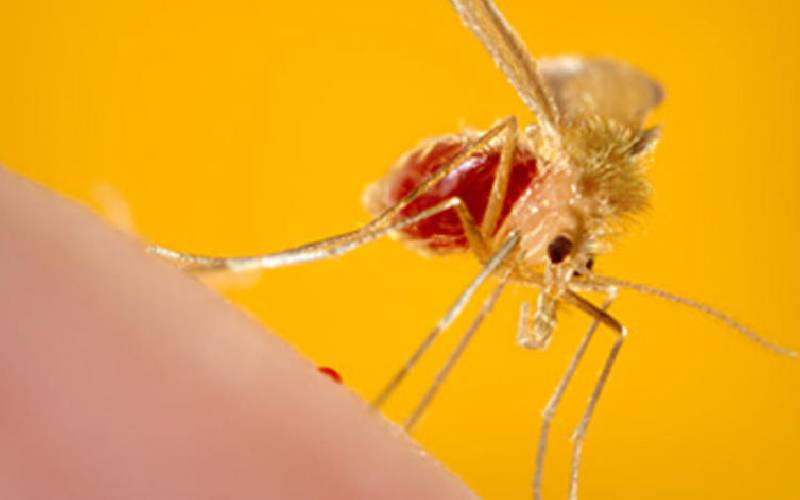Dairy farmers not keeping official breeding and production records of their herd are missing out on making money. There are official records and then there are own non-official records.
The difference is that the official records are kept as per standard recommendations and have certificates recognised by breeding stakeholders.
The official registration of cattle and other animals is done by the Kenya Stud Book (KSB) while the official Milk Recording is done by the Dairy Recording Services of Kenya (DRSK).
Both are managed by the Kenya Livestock Breeders Organisation (KLBO) under the Agricultural Society of Kenya (ASK) with headquarters in Nakuru.
Registration categories
To become a member of the official recording, the first record you will need is to register your heifers/cows with the KSB. There are four animal registration categories namely pedigree, appendix, intermediate and foundation depending on the animals level of breed type as determined by availability of ancentry records and or body characteristics.
The pedigree animal is the highest level within the breed whose ancentry is known. Having a pedigree allows you to be a member of the breed society and participate in its activities for promoting the breed, entering competitions as in livestock shows and you can aspire to be among the producers of the best cows or even produce the best cow(s) within the breed in your region, Kenya, Africa and even the world.
This would add a lot of value to your heifers and even the bulls that you produce making this a major source of income from your dairy enterprise.
A farmer requires to apply at a small cost to the KSB and pay the going fee for the category her animal falls under.
Joining official recording system
If it is an animal of unknown parentage it will have to be first inspected by approved breed inspectors for its breed type. It will then be registered as a foundation.
From this foundation animal, the farmer can eventually obtain a pedigree animal as long as pedigree sires are used to sire the daughters in every generation.
Daughters born from this foundation will be registered and called Intermediate, daughters born from Intermediate are registered as Appendix, daughters of appendix are registered as Pedigree. All the animals registered as so are also given a unique identity number and entered into the KSB register.
After the animal registration you can then apply to join the DRSK and officially start recording milk of your cow(s) at a small cost. This involves submitting a monthly sample for testing of the butter fat and protein to the nearest butterfat testing laboratory. These laboratories can be found at Kabete, Karatina, Nakuru, Kitale, Maseno and Mtwapa. The accepted number of days for the recording of the amount of milk produced after each calving for each cow is 305 days, so the DRSK will issue you with a Lactation certificate for 305 days including the butterfat and protein percentages.
If you record all your cows then you can apply for a herd lactation average for the year and in the long term apply for a lifetime milk production lactation certificate for each of your cows.
Stay informed. Subscribe to our newsletter
This milk recording will help you identify genetically superior animals with known authenticated parentage and production and it will assist you get rid of unproductive animals and create desired family lines thereby creating a reputation that is indisputable thus increase in monetary value of your herd.
Ordinary farmers who have translated from non-recorded cows to officially recorded cows have sold their heifers/cows at much higher prices at any of the stages of registration from say Sh80,000 to Sh120,000 or even higher.
In Africa, Kenya is a leader in the number of dairy animals owned by small scale farmers but when buyers offering good prices from other neighbouring countries seek the same they cannot buy any or cannot get enough due to the fact that the animals have no records.
This is because in general, buyers are advised by experts to buy only animals that have genuine records. Another benefit from official recording is that you can be recruited into the contract mating programme of Kenya Animal Genetic Resources Centre (Kagric) where if one or more of your cows meet their conditions you can sign a contract that they use their best bull semen on the cow(s). If a bull is born out of it and it satisfies their conditions on body characteristics (traits) they will purchase it at the agreed, usually good price while its only a few months old.
If it’s a heifer you will keep it and benefit from having a heifer sired by one of the best bulls in the world. Selling a bull to Kagric will increase your herd’s reputation and raise the value of your heifers /cows even more.
Once these young bulls brought to Kagric start producing semen they enter another programme called Progeny testing. If you are officially milk recording your animals you can enter this programme and benefit from the incentives provided while breeding your animals with some of the best bulls. For the above recording systems to operate a reliable individual animal identification is a must. These range from names, animal, ear tags, brands.
Other breeding records include.
Fertility records
First heat after calving, service dates and date of calving records that are on target will prove how fertile your cow is, thus increasing the value of the animals significantly.
Endeavouring to keep these records will keep you on track to ensure you play your part in ensuring the heifer(s), cow(s) meet the recommended standards for fertility. These records will facilitate the vet to pinpoint any fertility problems .
Body characteristics records
These are characteristics that affect milk yields, ability to avoid diseases, how long the animal will last and how easily it can give birth.
Some of these are Size (stature, chest width, body depth and rump width) , Udder , Legs and Feet ( position and use of Rear Legs and hoof diagonal). If you have been breeding your animals so as to achieve cows with the best of these traits maintaining a record of these traits for each of the cows means you can prove to any interested parties or buyers how good your animals are thereby increasing their value even more.
Check from your nearest veterinary /livestock production officer for assistance on any of the above issues).
The writer works for the Agriculture Ministry in animal health and production
 The Standard Group Plc is a
multi-media organization with investments in media platforms spanning newspaper
print operations, television, radio broadcasting, digital and online services. The
Standard Group is recognized as a leading multi-media house in Kenya with a key
influence in matters of national and international interest.
The Standard Group Plc is a
multi-media organization with investments in media platforms spanning newspaper
print operations, television, radio broadcasting, digital and online services. The
Standard Group is recognized as a leading multi-media house in Kenya with a key
influence in matters of national and international interest.
 The Standard Group Plc is a
multi-media organization with investments in media platforms spanning newspaper
print operations, television, radio broadcasting, digital and online services. The
Standard Group is recognized as a leading multi-media house in Kenya with a key
influence in matters of national and international interest.
The Standard Group Plc is a
multi-media organization with investments in media platforms spanning newspaper
print operations, television, radio broadcasting, digital and online services. The
Standard Group is recognized as a leading multi-media house in Kenya with a key
influence in matters of national and international interest.





